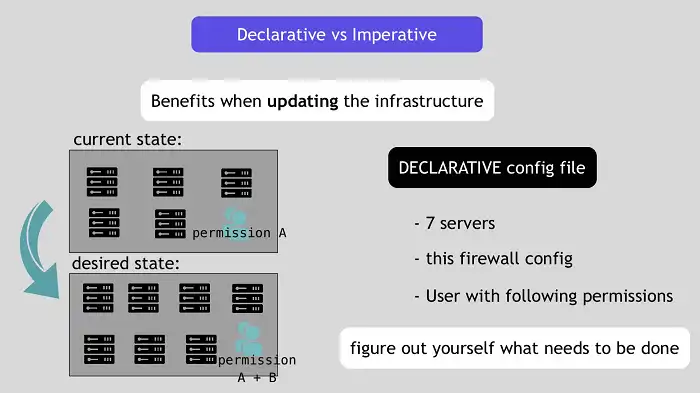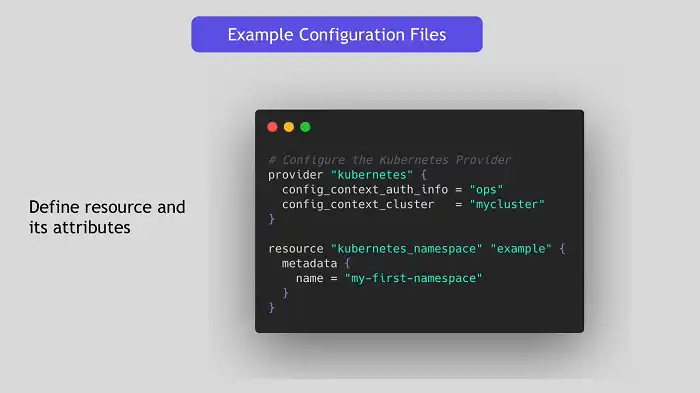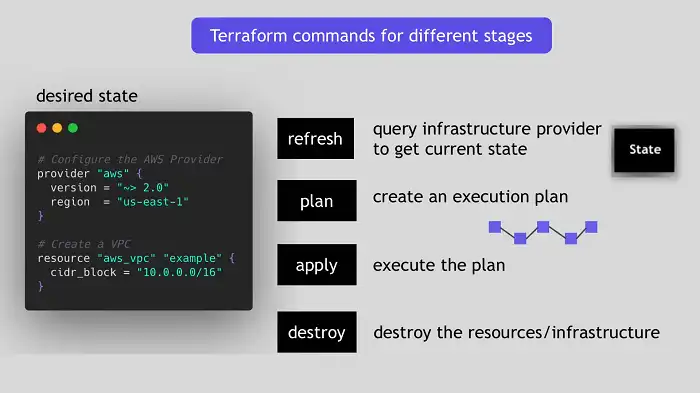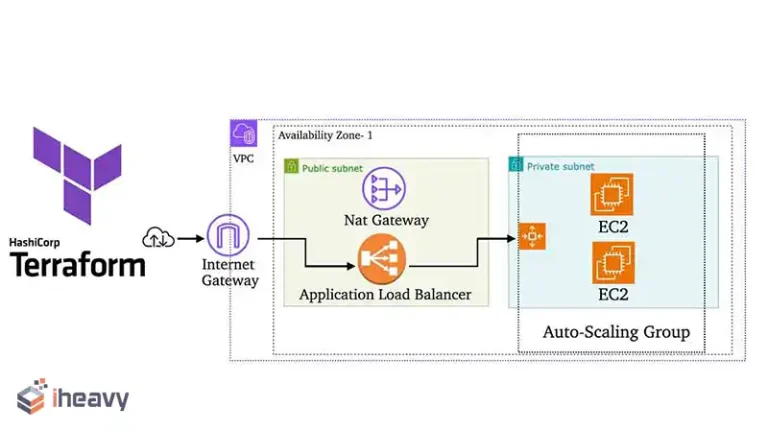What Are the Benefits of Using Terraform? | Six Explained
Terraform, an open-source infrastructure as code (IaC) tool developed by HashiCorp, has become a game-changer in DevOps and cloud computing. Traditional methods of infrastructure provisioning and configuration management pose challenges in terms of scalability, repeatability, and collaboration.
In contrast, Terraform allows developers and operators to define and provision infrastructure using a declarative configuration language. Well, that’s just the tip of the iceberg. Let’s explore the key benefits that make Terraform a must-have tool for any organization.

What Is the Main Benefit of Using Terraform?
The main benefit of using Terraform extends across a spectrum of advantages, each contributing to a streamlined, efficient, and collaborative approach to managing infrastructure. Here’s an overview about some of the pivotal benefits that make Terraform an indispensable asset
1. Infrastructure as Code (IaC): Simplicity Redefined
Terraform’s core strength lies in its ability to treat infrastructure as code. With Terraform, you express your infrastructure requirements in a declarative configuration language. This means that your infrastructure is defined in code, making it version-controlled, easily auditable, and reproducible. No more manual interventions and no more risky, error-prone configuration changes. Just code.

2. Multi-Cloud Provisioning: Flexibility Unleashed
In a world where multi-cloud environments are increasingly common, Terraform stands out as a tool that supports a multitude of cloud providers. Whether you’re deploying resources on AWS, Azure, Google Cloud, or any other supported platform, Terraform abstracts away the underlying complexities, providing a consistent interface to manage diverse cloud infrastructures.
3. State Management: Confidence in Every Change
Terraform maintains a state file that keeps track of the current state of your infrastructure. This state file acts as a source of truth, allowing Terraform to understand what changes need to be made to achieve the desired configuration. This ensures predictability and consistency in your infrastructure changes, mitigating the risk of unintended consequences.
4. Modularity: Reusable and Scalable Configurations
Terraform’s modular design encourages the creation of reusable modules.
What Are the Benefits of Terraform Module?
Terraform modules encapsulate a set of resources with well-defined inputs and outputs, promoting best practices for infrastructure design. The ability to compose complex architectures using modular components enhances collaboration, as teams can share and reuse these modules across different projects.

5. Plan and Apply: Controlled Changes
One of Terraform’s standout features is the ability to plan changes before applying them.
What Are the Benefits of Terraform Plan?
The terraform plan command provides a detailed preview of the modifications that will be made to the infrastructure. This allows operators to review and understand the impact of changes before they are executed, promoting a cautious and controlled approach to infrastructure updates.

6. Community and Ecosystem: Shared Wisdom
Terraform boasts a vibrant community and an extensive ecosystem. The HashiCorp Registry contains a plethora of pre-built modules contributed by the community, covering a wide range of use cases. This collaborative ecosystem accelerates development by enabling teams to leverage existing solutions, avoiding the need to reinvent the wheel for common infrastructure patterns.
So, Is Terraform a Good Tool?
The short answer is yes. Terraform’s versatility, simplicity, and robust features make it a standout choice in the realm of infrastructure as code (IaC). Whether you are navigating the complexities of multi-cloud environments, striving for enhanced collaboration, or seeking efficient cost optimization, Terraform’s capabilities align seamlessly with the demands of modern IT landscapes.
As we’ve witnessed, Terraform not only simplifies infrastructure management through declarative configuration but also empowers teams with collaborative workflows, precise control over changes, and the flexibility to scale across various cloud providers.
Therefore, embracing Terraform is not just a choice for today; it’s an investment in a tool that aligns with the future of scalable, efficient, and collaborative infrastructure management.
Frequently Asked Questions
Is Terraform suitable for small projects?
Absolutely. While Terraform scales seamlessly for large, complex infrastructures, its simplicity and modularity make it equally effective for small projects.
What is the advantage of Terraform state?
With a state backend, Terraform employs remote locking to prevent concurrent executions, ensuring each run starts with the latest updated state.
Is Terraform better than Kubernetes?
When considering Terraform versus Kubernetes, it’s crucial to recognize that each tool serves distinct purposes in application and infrastructure management. Terraform stands out for its proficiency in handling infrastructure provisioning, while Kubernetes excels in tasks related to scaling and overall management.
Conclusion
In conclusion, Terraform revolutionizes infrastructure management by combining simplicity, flexibility, and collaboration. Its ability to define, provision, and manage infrastructure as code brings unparalleled efficiency to the DevOps workflow. We hope this exploration into the benefits of Terraform has been enlightening. Have questions or thoughts to share? We’d love to hear from you.

![What Is A Difference Between The Functions Of Cloud Computing And Virtualization? [Answered]](https://www.iheavy.com/wp-content/uploads/2024/03/Functions-Of-Cloud-Computing-And-Virtualization-768x432.jpg)





